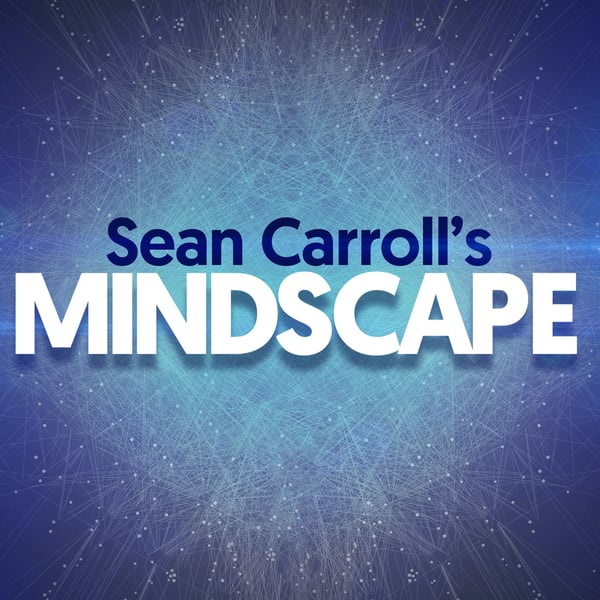234 | Tobias Warnecke on Cellular Structure and Evolution
Sean Carroll's Mindscape: Science, Society, Philosophy, Culture, Arts, and Ideas
Sean Carroll | Wondery
4.8 • 4.4K Ratings
🗓️ 24 April 2023
⏱️ 67 minutes
🧾️ Download transcript
Summary
Eukaryotic cells manage to pull off a number of remarkable feats. One is packing quite a long DNA molecule, with potentially billions of base pairs, into a tiny central nucleus. A key role is played by histones, proteins that provide scaffolding for DNA to wrap around. Histones also appear in archaea (one of the other domains of life), but until recently there wasn't evidence for them in bacteria (the final of the three domains). Todays guest, Tobias Warnecke, is an author on a recent paper that claims to provide such evidence. We discuss this new result, as well as background questions of how cells evolved and what their current structure can teach us about their histories.
Support Mindscape on Patreon.
Tobias Warnecke received his Ph.D. in biology from the University of Bath. He is currently a Programme Leader and MRC Investigator at the London Institute of Medical Sciences. He is a co-author on A. Hochner et al. (2023), "Histone-Organized Chromatin in Bacteria."
See Privacy Policy at https://art19.com/privacy and California Privacy Notice at https://art19.com/privacy#do-not-sell-my-info.
Transcript
Click on a timestamp to play from that location
| 0:00.0 | Hello everyone, welcome to the Mindscape Podcast. I'm your host, Tron Carroll. I'm not sure if |
| 0:04.2 | everyone knows, but I have mentioned sometimes on Twitter, I keep a list of the Twitter feeds of |
| 0:11.6 | all previous Mindscape guests who are on Twitter. So you can, it's a public list. You can go and |
| 0:16.8 | you can subscribe to it or check out who's on there, etc. It's kind of enlightening, you know, |
| 0:21.0 | it helps me keep track of what is being said by all the former guests. And since I followed |
| 0:26.8 | that list, one of the people on it is Fiodor Ornov, who was our guest some time ago who talked |
| 0:31.8 | about CRISPR and gene editing, a wonderful molecular biologist. And on Twitter recently, he got very, |
| 0:38.0 | very excited. Fiodor started talking about this new result that is going to rewrite the biology |
| 0:44.8 | text books. It's very, very exciting. And that result is what we're going to talk about today. |
| 0:50.4 | It has to do with a little kind of protein called a histone. I had, I think I had heard of histones |
| 0:57.5 | before this appeared on Twitter, but I didn't really know anything about them. The point is that |
| 1:02.0 | in a human being or other, you know, fairly mature organisms, we have DNA. The DNA carries |
| 1:09.2 | our genetic information and there's a lot of it. There's a lot of genetic information to be |
| 1:12.8 | carried. So if you were to take a single DNA strand from a human being and stretch it out, |
| 1:18.7 | it would be something like 1.8 meters long. That's very long and we have to squeeze it into the cell, |
| 1:26.3 | the nucleus of a cell in our body, every single cell that we have. So how do we do that? The answer |
| 1:31.6 | is that the DNA wraps itself tightly around these little proteins called histones. So histones are |
| 1:39.1 | the backbone or the spool if you like that you spin the thread around that keeps the DNA organized. |
| 1:45.9 | And because it's biology and biology is always complicated, the individual units around which the |
| 1:52.8 | DNA wrap to do this are called nucleosomes and then the nucleosomes are put into these fibers |
| 2:01.2 | that form chromatin and these will make up your chromosomes, etc. I could never remember all these |
| 2:05.9 | words. That's why I became a physicist. But so clearly histones are very important. They help |
... |
Please login to see the full transcript.
Disclaimer: The podcast and artwork embedded on this page are from Sean Carroll | Wondery, and are the property of its owner and not affiliated with or endorsed by Tapesearch.
Generated transcripts are the property of Sean Carroll | Wondery and are distributed freely under the Fair Use doctrine. Transcripts generated by Tapesearch are not guaranteed to be accurate.
Copyright © Tapesearch 2025.

